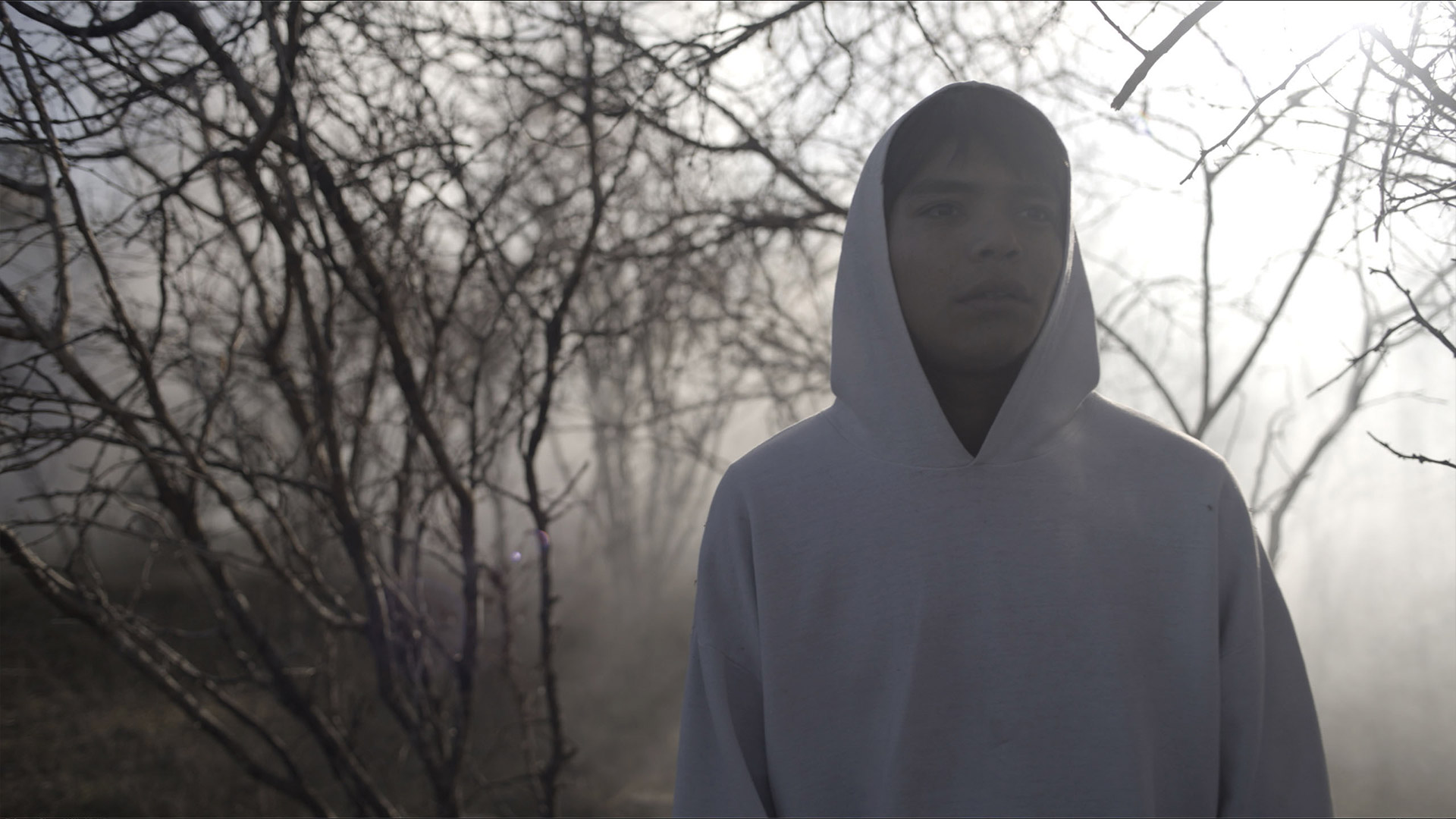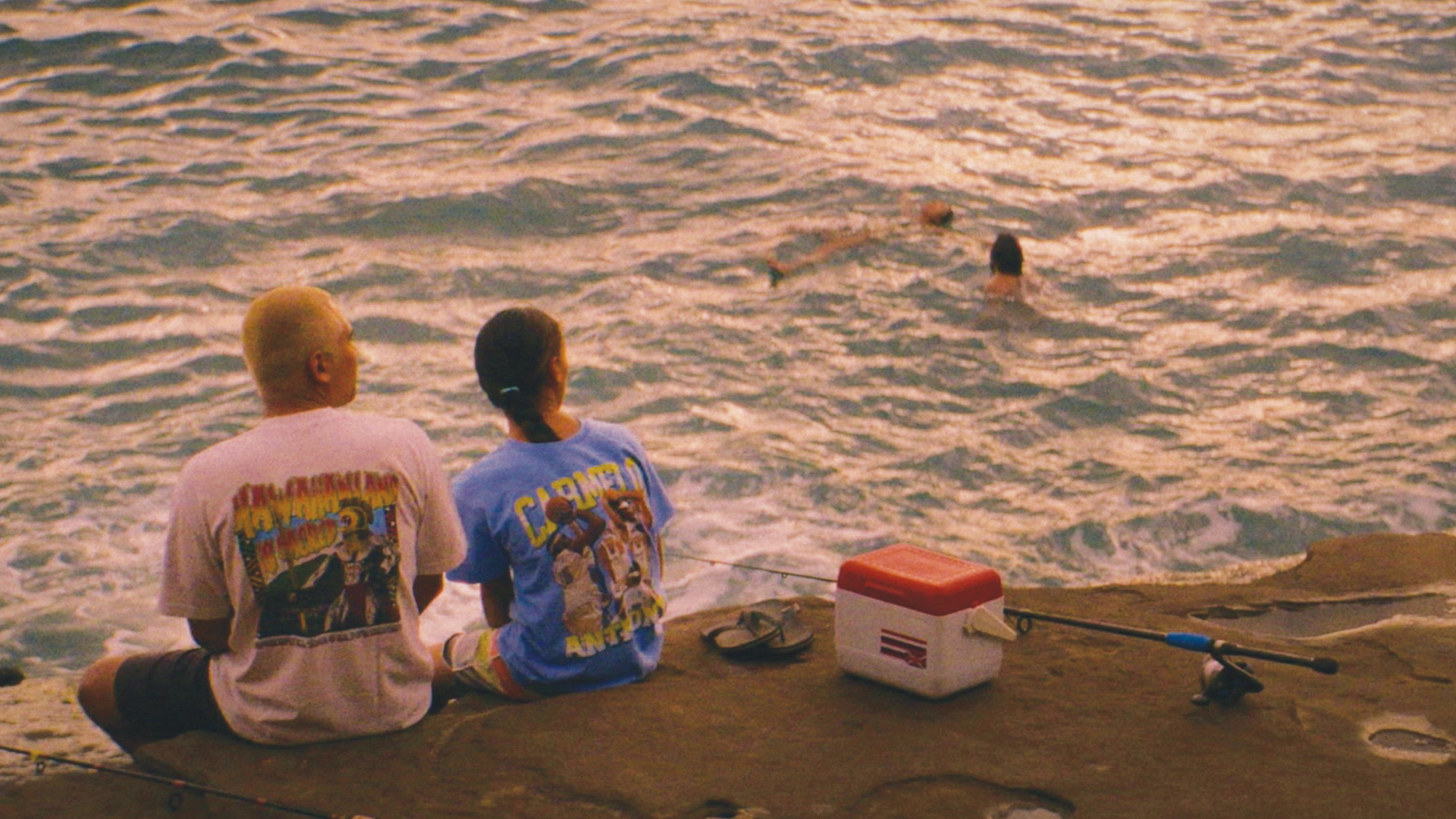Invisible Landscapes Film Trailer
Multifaceted Media for a Multifaceted Problem
Having been raised by a father who was a forester, Czech documentary film director Ivo Bystřičan has been thinking about the environment for as long as he can remember. Yet while he felt it important to contribute to the timely topic of climate change, he realized that he wanted to challenge himself by presenting a piece of work that didn’t repeat all that had already been done.
“There were many films generally targeting the climate change topic, and those groups are traveling around the world with very good financing and equipment,” Bystřičan explains. “Those films were important to me, but I didn’t want to do the same thing, depicting the sports of… climate catastrophes and droughts or hurricanes or whatever is caused by climate change. I was trying to find some perspective that would be new to me and that would even surprise me.”
In their quest for Invisible Landscapes to incorporate a distinct perspective, Bystřičan and Teresa Swadoschová — Bystřičan’s life partner and the film’s producer — began to collaborate with Czech musician Václav Havelka of the band fyield. They decided to invite musicians to be “quasi-characters” in the film, who visit locations that are significant to climate change and attempt to understand the sites through the medium of sound.
“We wanted the right musicians to do it, for their deeper relation to sound, generally,” explains Bystřičan. “Later, we came up with the idea to [bring] our own expedition philosopher to provoke the musicians.”
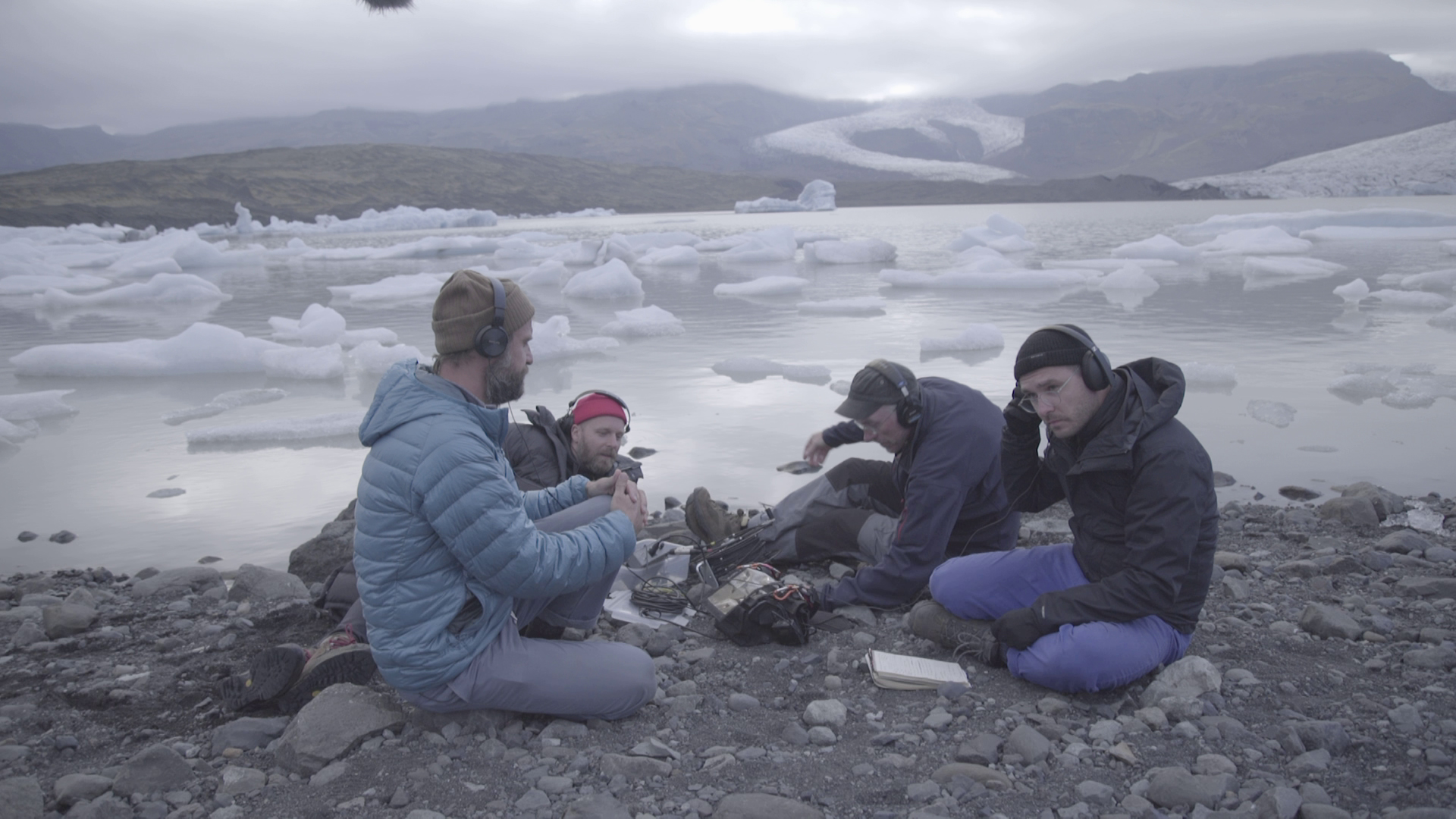
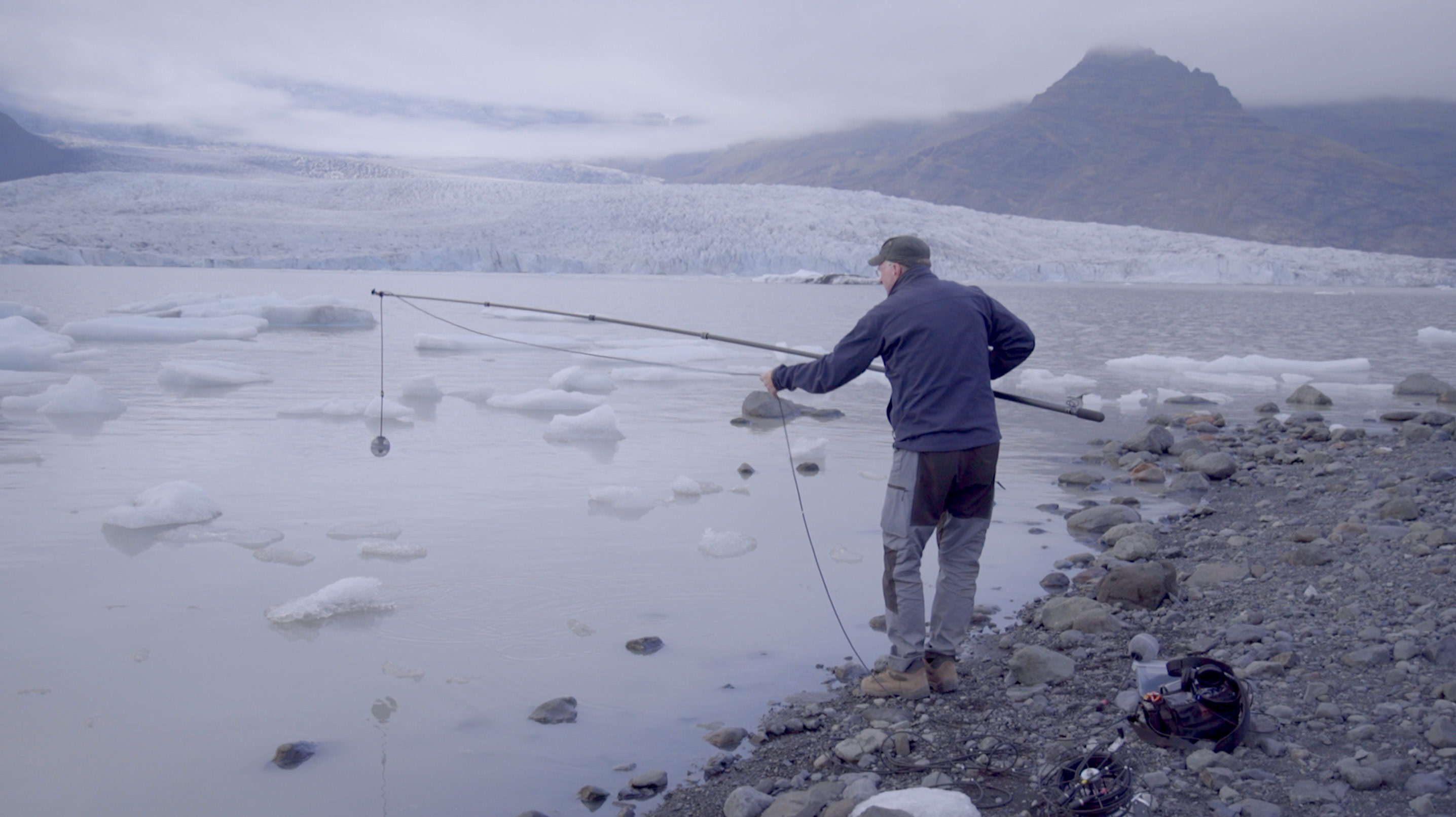
Invisible Landscapes expedition photo (top) and film still (bottom) from Fjallsárlón, a glacier lagoon in Iceland.
While Invisible Landscapes is sonically rich with a variety of ambient environmental sounds and industrial sounds from power plants, it is, in general, fairly minimal in dialogue. The sparse pieces of dialogue which are featured often come from philosopher Lukáš Likavčan, who focuses on environmental philosophy and the philosophy of science and technology. During the expeditions, Likavčan prompts the musicians — Havelka and his bandmate Pan Thorarensen of Iceland — to more deeply consider the field recordings, which are conducted by Magnus Bergsson of Iceland and Sara Pinheiro of the Czech Republic.
“We are using sound to stimulate the imagination, because I think we are kind of stuck in thinking this [the same way] all the time,” says Bystřičan. “[Society is] about letting just experts and politicians decide, expecting that they somehow manage, but I think they will not. They cannot.”
Many of the conversations the musicians and field recordists have with one another showcase deep perceptions of sound that move far beyond the surface-level sensibilities of an average person. Those which were not used in the film became the backbone for the project’s other interdisciplinary elements, such as a musical album and a podcast.
“There’s a lot of music, but if you have a conceptual album which touches some kind of problem we are experiencing, is linked to particular places, and is linked to particular topics — that are linked to those particular places, that might be interesting for some kinds of audiences,” Bystřičan explains. “We went, in a way, of using and reusing and recycling the material we were planning to have, so that was very environmentally sensitive; you will have one material [being used differently] four or five ways.”
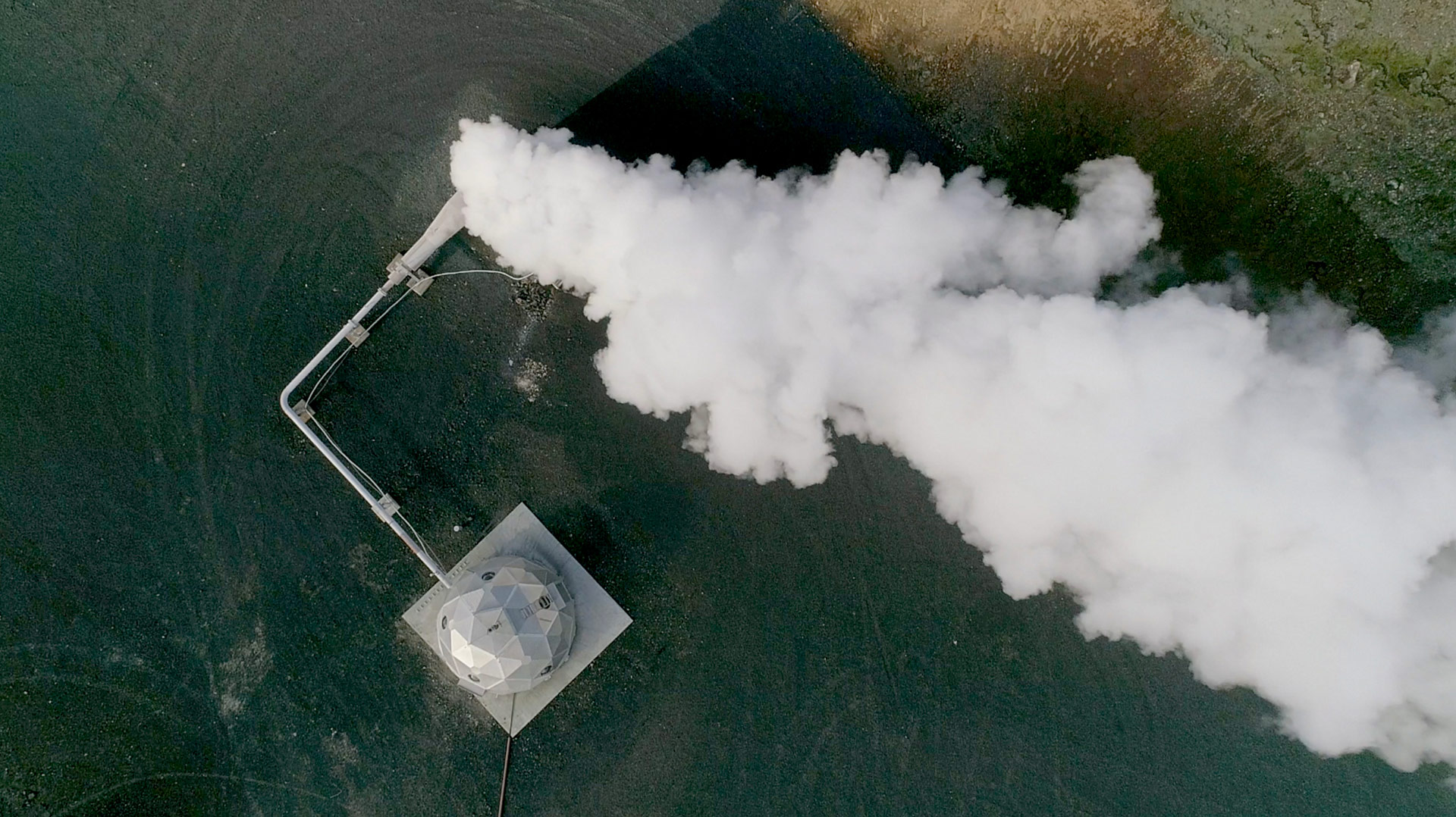
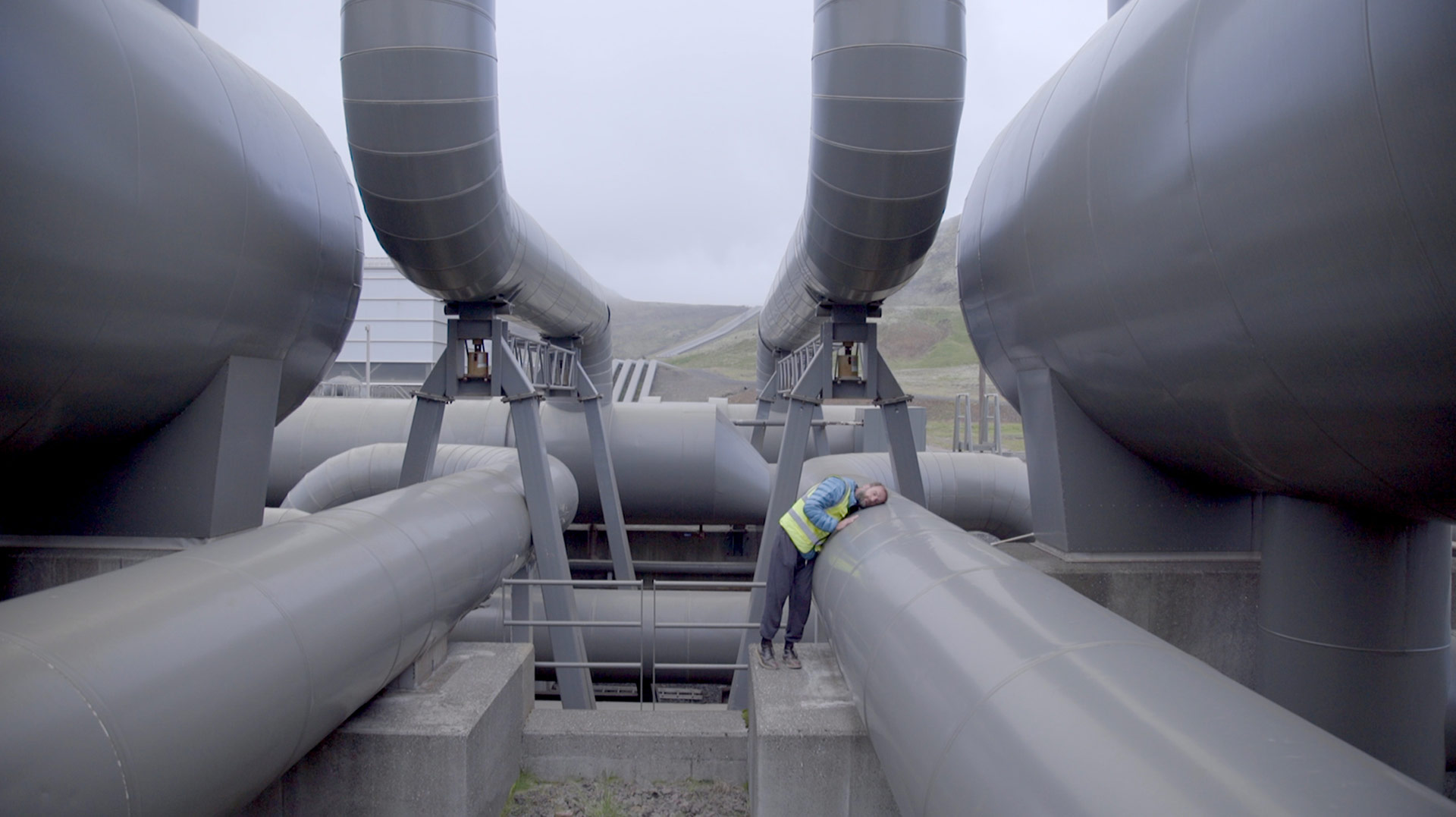
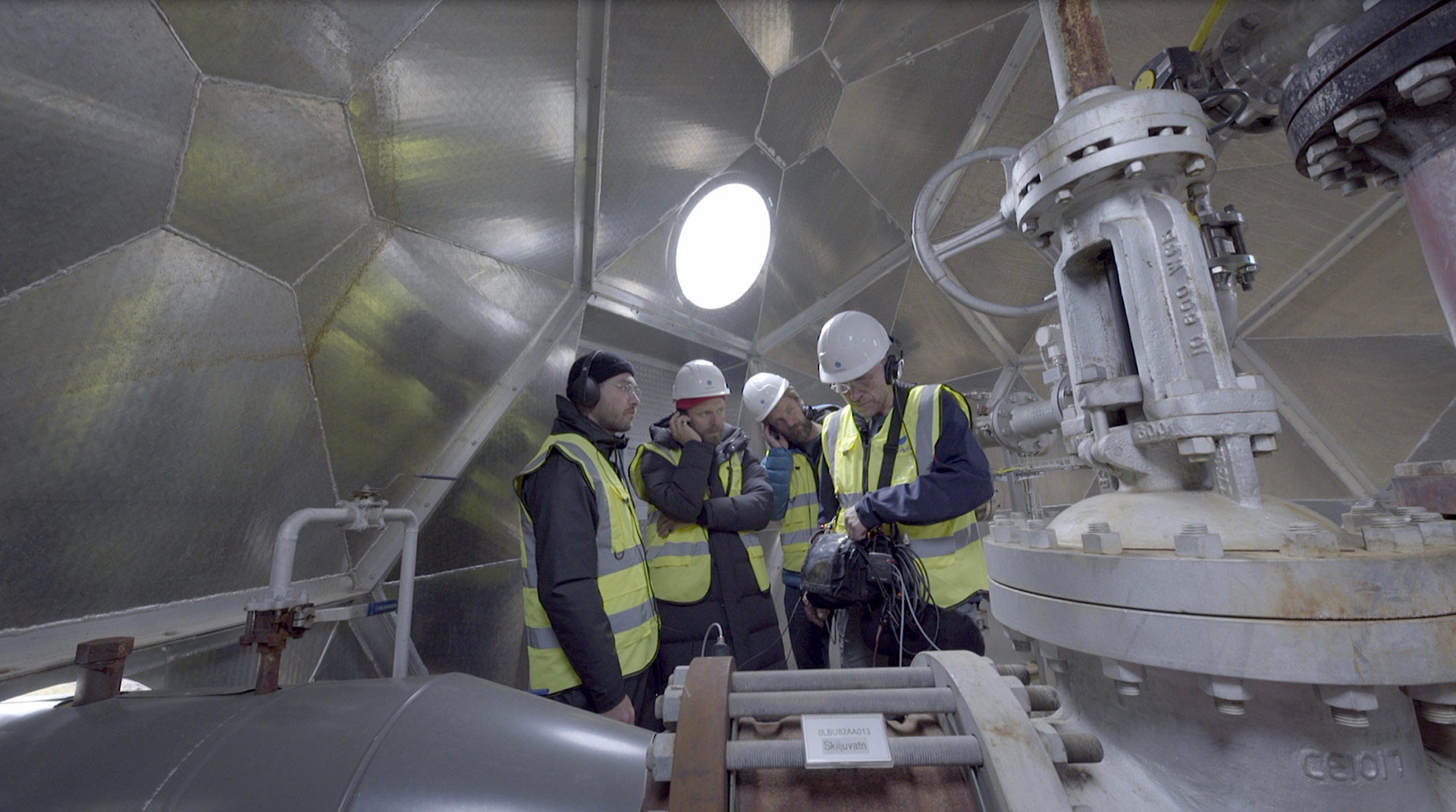
Invisible Landscapes film stills from Hellisheiði, an Icelandic geothermal power plant.
Applying Environmental Philosophy to Sound
Interspersed throughout Invisible Landscapes are a number of educational title cards which include facts about climate change and offer insights into each individual location. Philosophical words from Likavčan also serve as excellent conceptual framing. One standout insight comes when he says, “Sound gives us a structure of not just being an object, but an effect.”
Such concepts are obvious when the musicians listen to the varying types of power plants which are featured throughout the film. Notable examples include the Búðarháls hydropower plant and Hellisheiði geothermal plant in Iceland. At both, the musicians place their ears to metal pipes filled with steam or water, diving deeper into their layered sonic qualities through the use of specialized microphones called geophones and hydrophones. At Žarošice, an oil field in the Czech Republic, giant oil wells suck the oil out of the ground like a straw.
“It looks like there’s almost nothing happening. Instead of some simple machine doing a job that it’s been doing basically since the end of the 19th century,” comments Likavčan. “Sounds give us, in this sense, an ability to perceive slow change. A change that is imperceptible visually.”
Once field recordist Sara Pinheiro places a contact microphone upon the oil well, Likavčan observes, “You can hear the process that is actually… like the gas is going up and then to the tubes.”
This comment beautifully illustrates his point that sound is an effect. With the sucking sound comes the extraction of centuries of decomposed organic creatures that have been transformed into oil for present-day consumption.
“With the help of a philosopher, [whose role was] provoking [the musicians] to think, [we wanted] to free them from the usual categories of good and evil, nice and ugly, and to think in a different way than just binary opposition[s],” Bystřičan explains.
Bystřičan employed this strategy from the beginning. Though the Czech coal plant Tušimice is incorporated in Invisible Landscapes, he was careful to avoid critiquing coal as the sole evil culprit. Instead, the film reveals the complex reality of all technologies which generate electricity.
“In our country — but I suppose, in many countries — [it’s] the same. We just think [a] coal factory [or] coal power plant is an evil thing, and we should [all] go geothermal… because that’s great. Well, it’s not, and we should know it,” comments Bystřičan. “Not that everything is just bad, and everything’s fucked, and we are doomed, but we need to find much more sensitivity [about] how to invent things [and] how to operate them… economically and institutionally.”
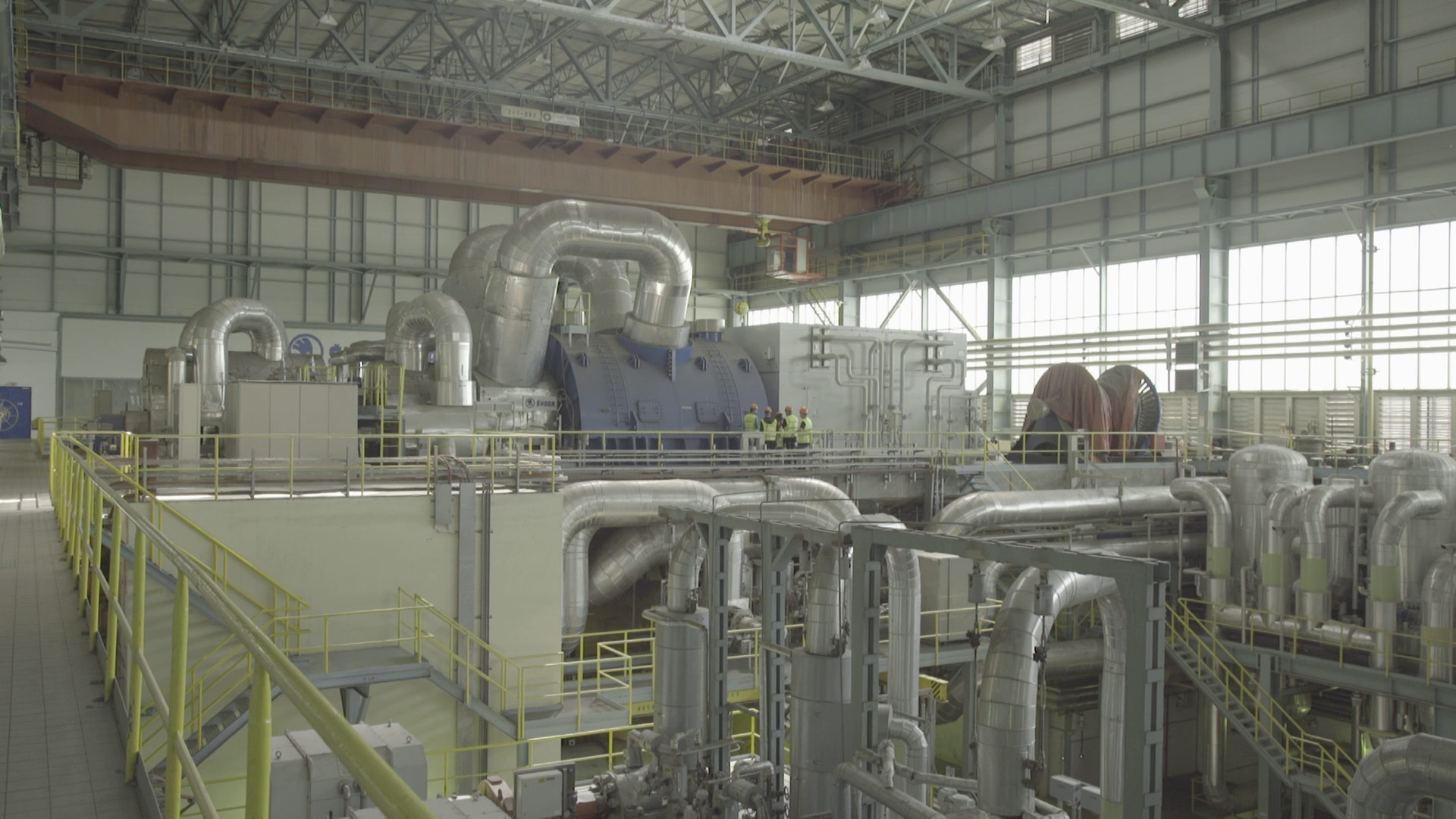
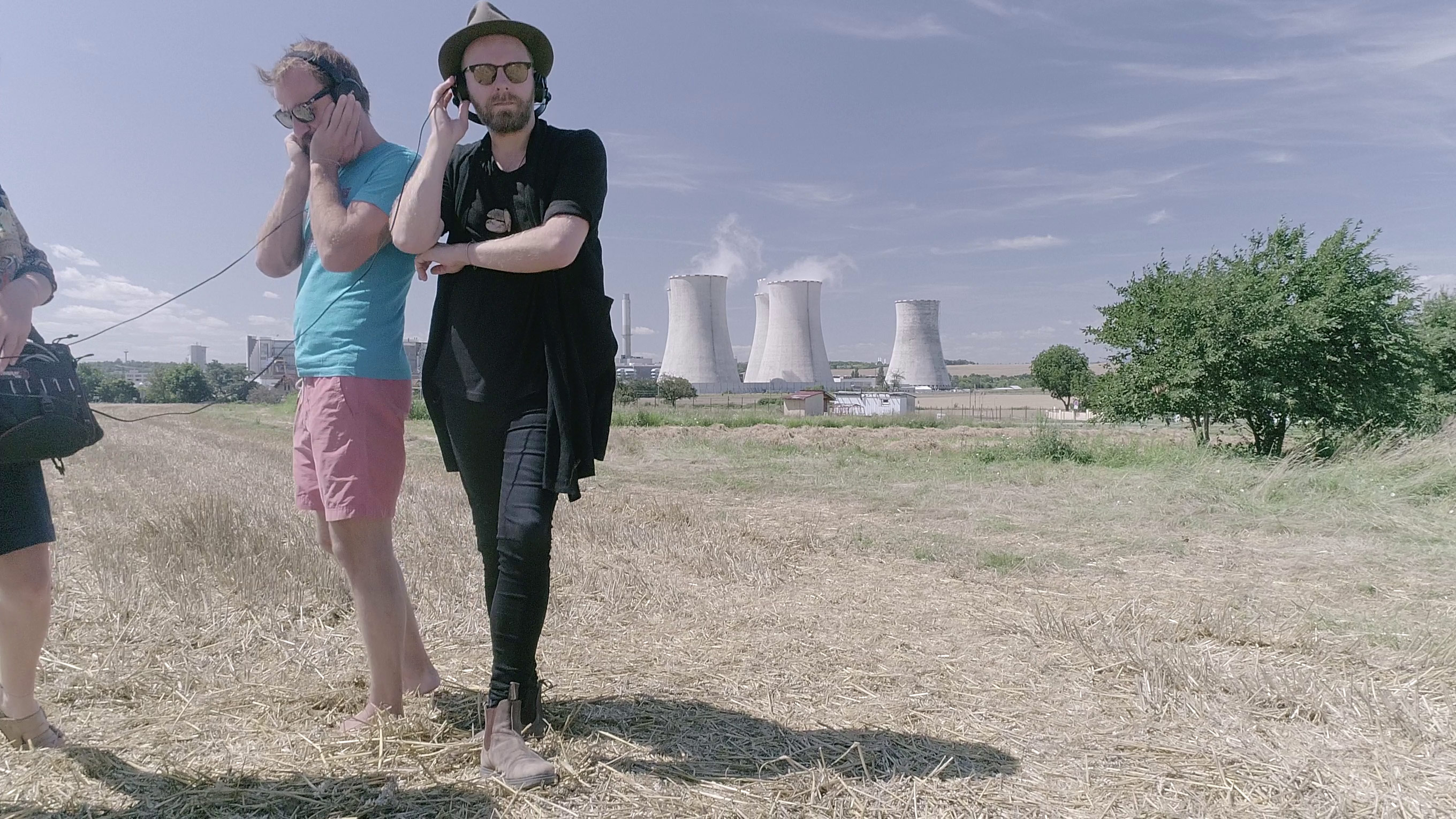
Invisible Landscapes expedition photos of Tušimice, a coal power plant in the Czech Republic.
Interconnected Environmental Impacts Across Time
“When I started to research what does what and what risks are connected with any particular technology, it was shown that every technology is connected with some problems,” explains Bystřičan, who believes that understanding such complexities will help human beings better address environmental issues. “Some of [the problems] are known already. Some of them are unknown; there are unknown unknowns, known unknowns. It’s a very diverse and multifaceted problem.”
Invisible Landscapes reveals, for instance, that while geothermal energy is often seen as “clean” because it does not release CO2 into the atmosphere, it comes with other repercussions. This complexity holds true for all other energy production technologies.
“Due to very skillful Icelandic greenwashing, [Iceland has] a very good reputation because they are not producing any CO2, which is a great thing, but they are causing other problems that are very deep, that are very dangerous, that are very interesting, and kind of unknown,” Bystřičan explains. “If you drill three kilometers under the surface in a volcanic area, that may bring you many problems. If your hydropower plant is dependent on the iceberg that is melting very slowly and very constantly through the decades, but then it starts to melt way much faster, and it’s going faster and faster… then [the] hydropower plant [may destroy] land and chase out any life, becoming useless.”
Invisible Landscapes reminds viewers that current environmental problems are the result of ongoing, interconnected chains of actions that have been taken in the past and continue to have repercussions. In addition to the aforementioned sites of energy production, the filmmakers also chose agricultural sites and landscapes with great biodiversity. They believe these three buckets serve as the fundamental building blocks of modern civilization, regardless of the types of governments attached to them.
“It doesn’t matter if this is… capitalism or communism, because… both dominant systems are modern,” says Bystřičan. “Modernity is not [a] political [or] economical regime.”
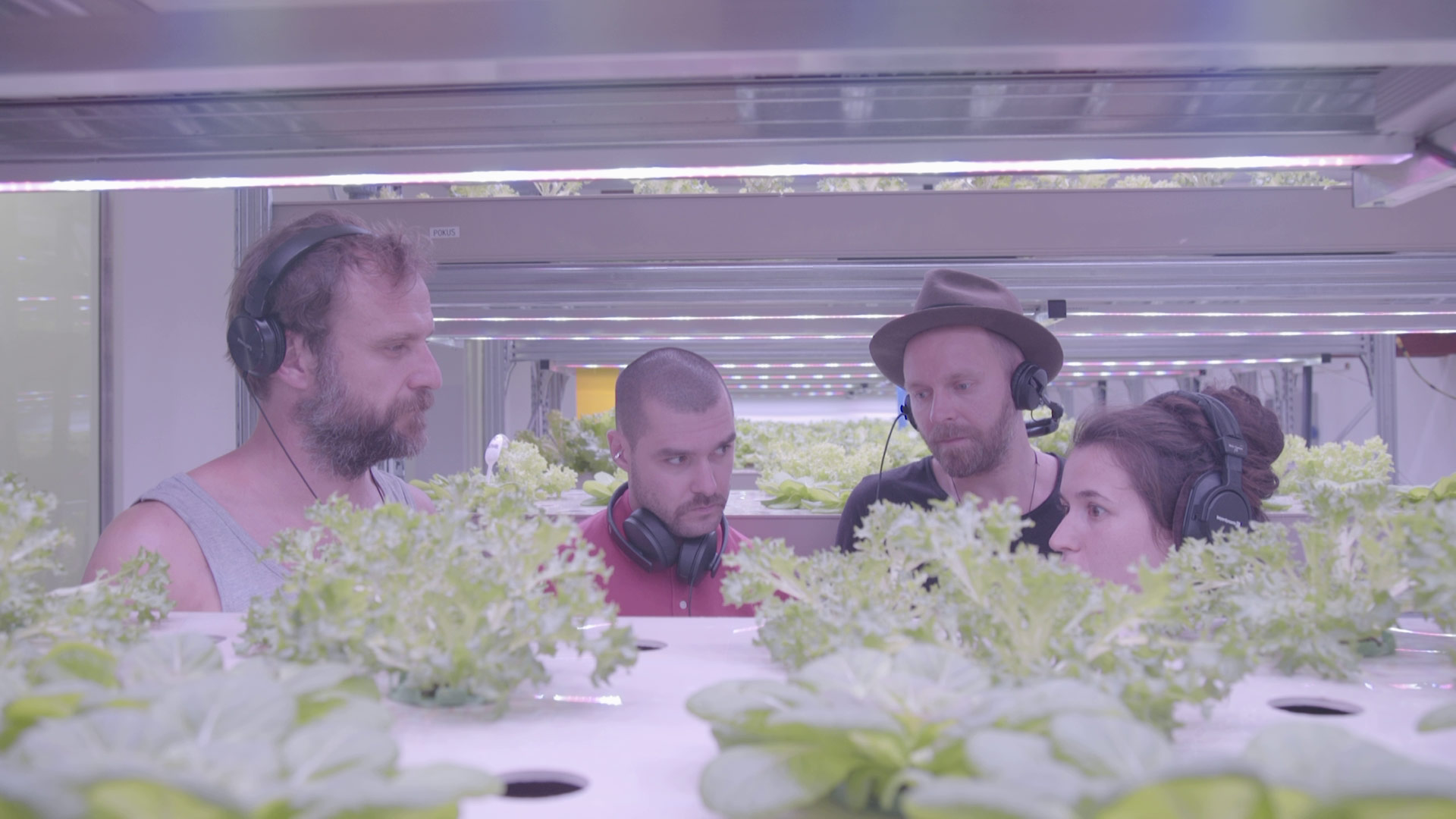
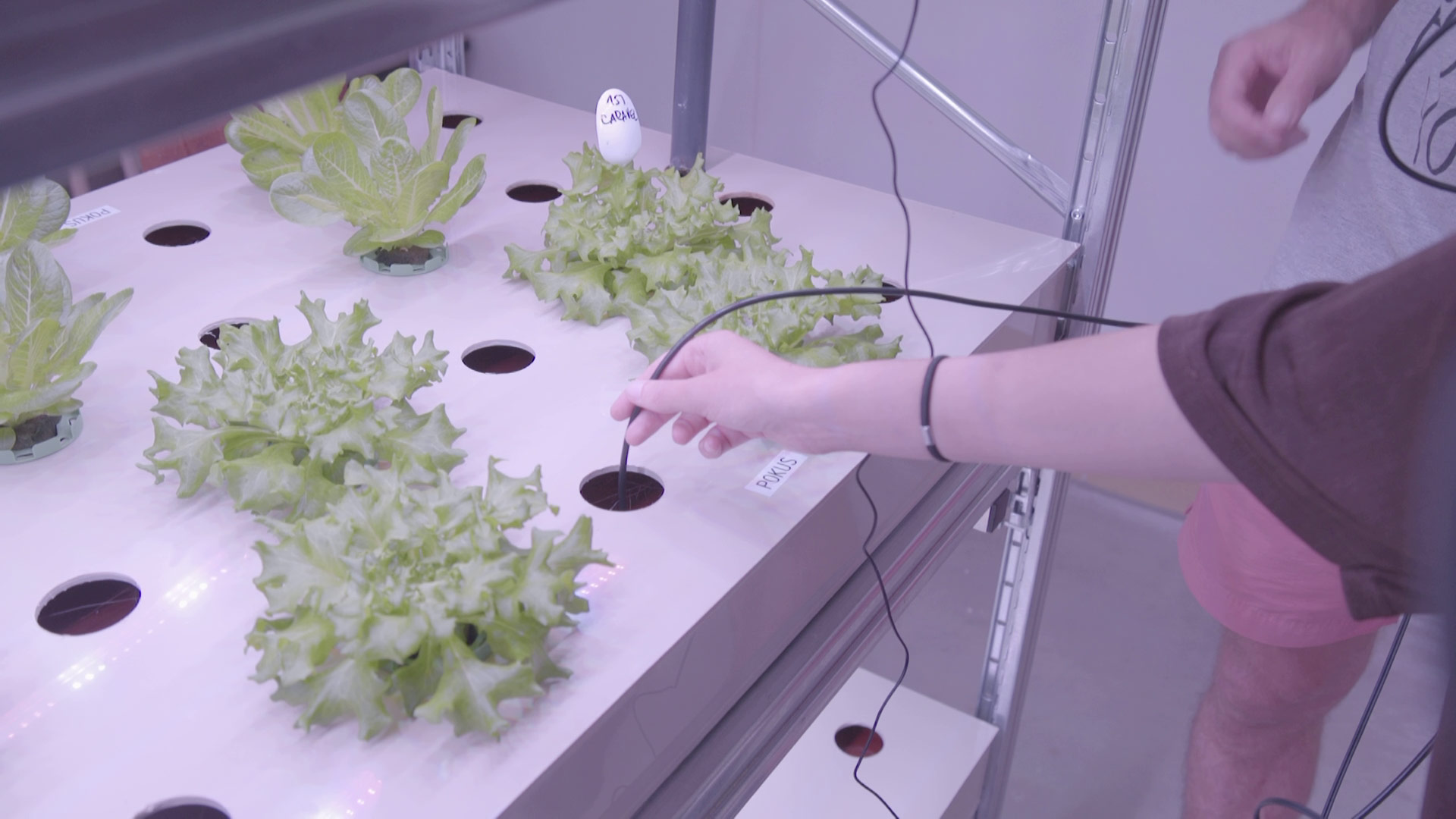
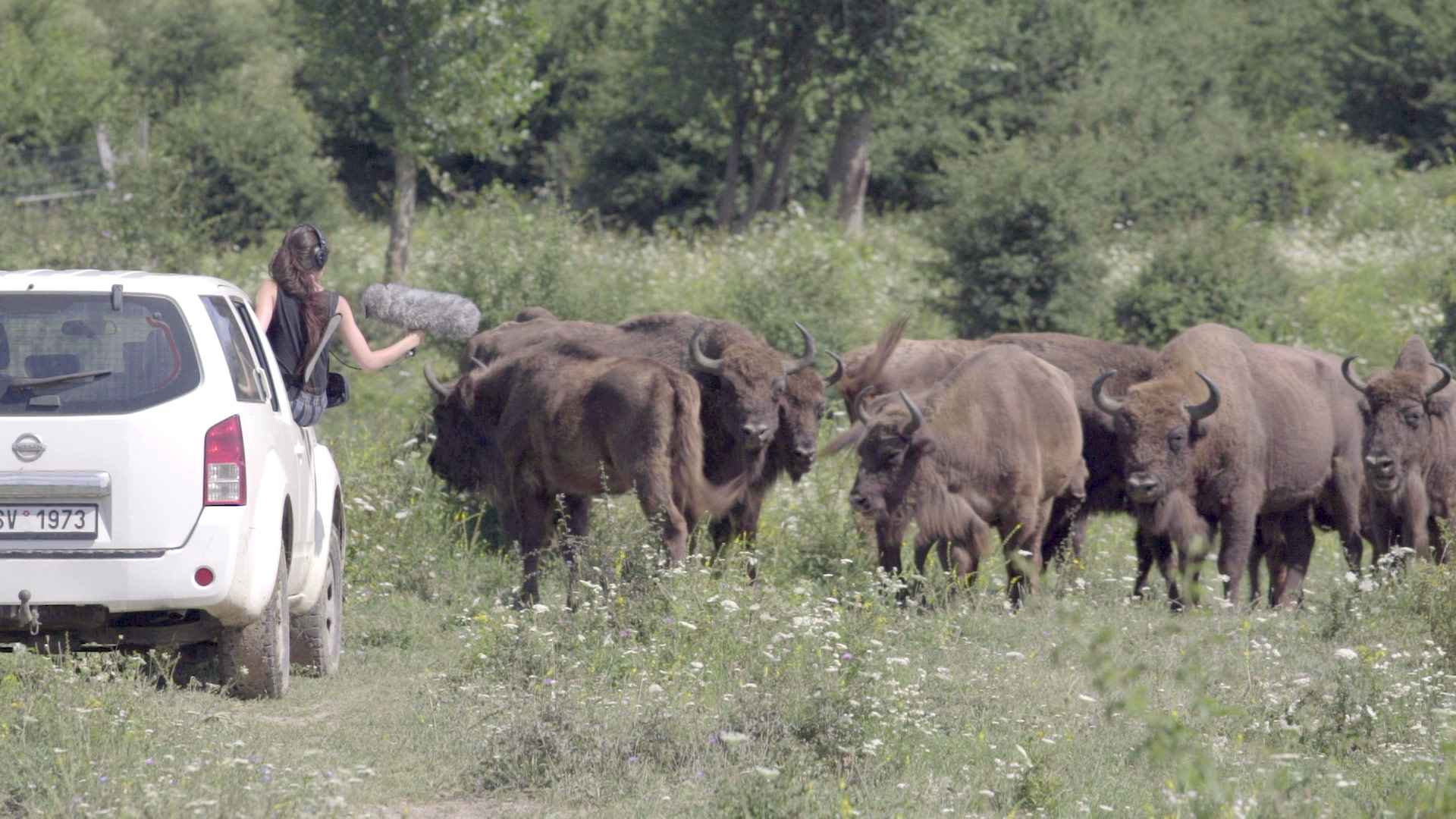
Invisible Landscapes expedition photos of Kaly, an aquaponic farm in the Czech Republic (top), and Milovice, a grazing reserve in the Czech Republic.
Imagination to Encourage Innovative Solutions
Invisible Landscapes is not all doom and gloom, however. Without being overly prescriptive, the film offers some solutions, by showing technologies such as a high-tech aquaponic farm called Kaly, which combines fish and vegetable farming to create a closed system where both entities thrive in reciprocal exchange. A more low-tech solution can be seen through Milovice, a nature reserve which was established in the Czech Republic in 2015. Since then, Milovice has seen positive outcomes through rewilding efforts and begun to thrive with biodiversity.
Yet Bystřičan admits that these are only a small portion of potential solutions. He supposes that moving to more community-oriented cooperative or communal models — as opposed to relying too heavily on massive nation-states — may be part of the solution. Encouraging everyone to dream about climate change solutions together is also a vision the film also hopes to prompt.
“[Climate change is a] way too difficult, multi-dimensional, super-complex thing, and I think much bigger masses of society should be part of common dialogue and more [fantastical] ways of thinking,” Bystřičan comments. “What are we experiencing? What can we do? What can everybody do? What can be new configurations of roles in society? New professions and new specializations?”
Bystřičan also hopes that human beings will begin to understand that they are not the only entities on the planet Earth. Invisible Landscapes illustrated that the sonic world which human beings understand — and that which is presented in the film are very much limited by current technologies. These understandings may be subject to change as future technologies develop. With this abstract thoughts in mind, Bystřičan hopes his next project will explore how other beigs experience the world around them.
“I’m very, very much interested in, for example, how the deer is experiencing the wildfire… or how the bird is experiencing the emptiness of the landscape with monocultural agriculture,” Bystřičan dreams, while acknowledging that there are far more birds and fish on earth than there are human beings. “Other beings could be bringing us to the idea that our senses and our no knowledge are not the only one on this planet, and we somehow share it… because like this human-centric perspective is becoming boring, and I think it’s also very dangerous.”
He continues, “We don’t understand that our steps have very broad and complex consequences that are finally threatening even us — through a whole cycle of consequences in nature, through other beings, and everything.”
- Invisible Landscapes – Film streaming locations in North America
- Future Landscapes – The musical album created by fyield, related to Invisible Landscapes
- Field Notes – Journey documentation written by Lukáš Likavčan
- Inspiration Forum – A platform for exploring today’s world
- Podcast – An eight-part series focused on each of the locations featured in the film
- Ekostory – An Interdisciplinary eco-project for students and other interested parties
Ω



